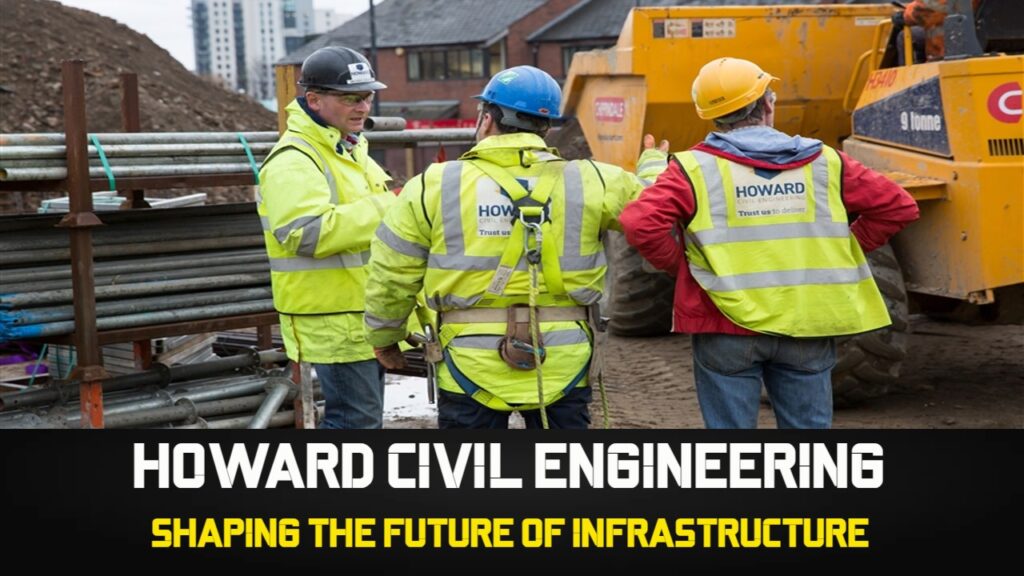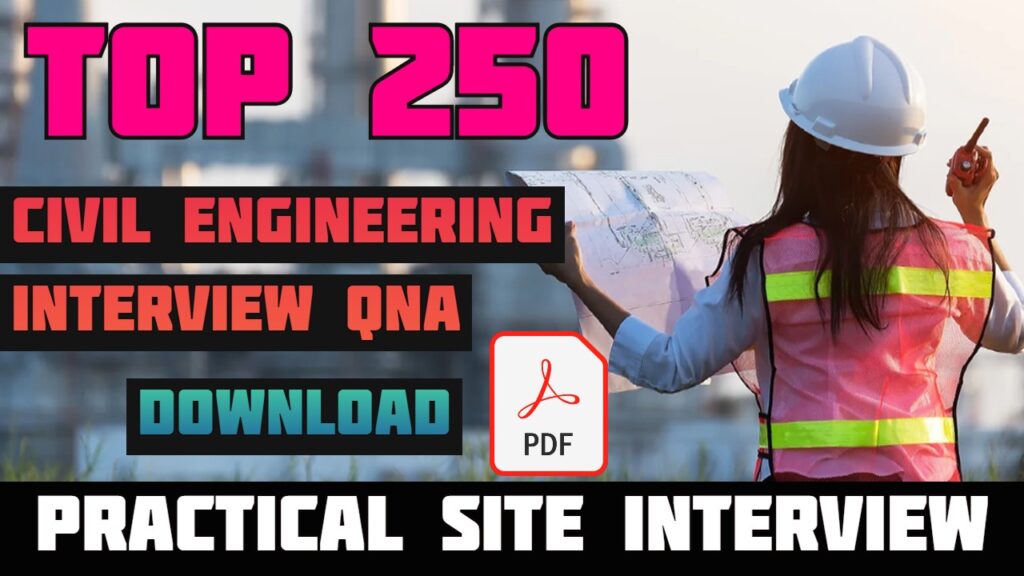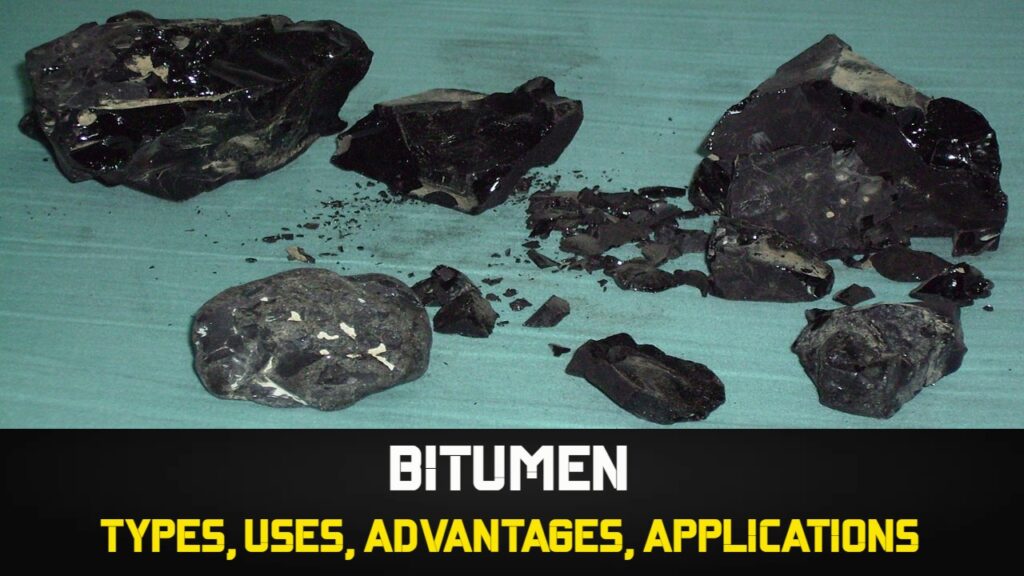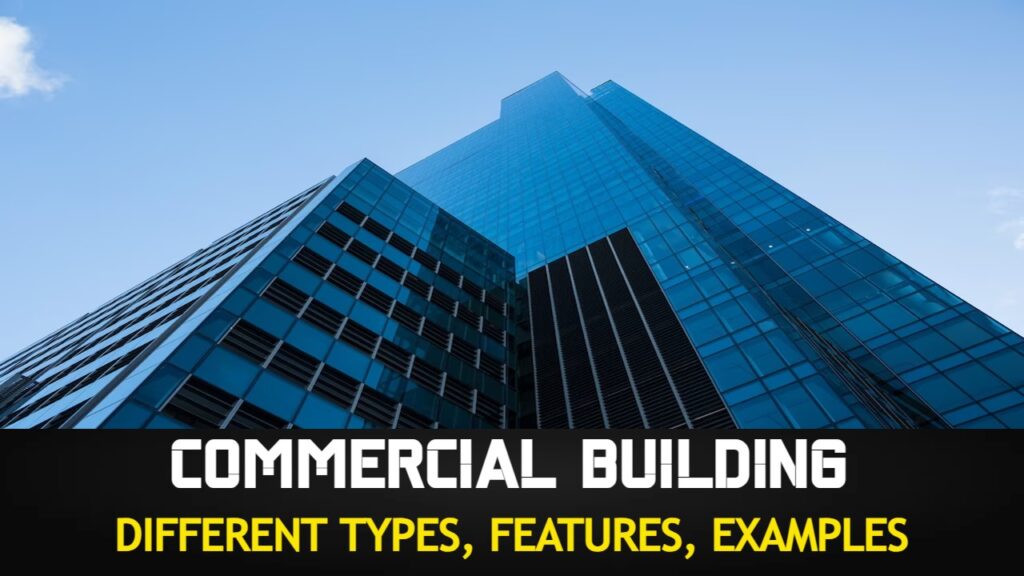The building industry has been looking for environmentally friendly substitutes for conventional materials recently. Geopolymer concrete is one such invention, and it has a number of positive environmental and functional effects. An innovative material that has received a lot of interest in the field of civil engineering is geopolymer concrete. This article examines the idea, make-up, characteristics, benefits, uses, and potential uses of geopolymer concrete.
Contents
- 1 Defining Geopolymer Concrete
- 2 Composition and Constituents of Geopolymer Concrete
- 3 Early Strength Properties of Geopolymer Concrete
- 4 Flexural Behavior of Geopolymer Concrete
- 5 Performance Assessment of Geopolymer Concrete
- 6 Advantages of Geopolymer Concrete
- 7 Applications of Geopolymer Concrete
- 8 The Future of Geopolymer Concrete
- 9 Costing of Geopolymer Concrete
- 10 Conclusion
- 11 Frequently Asked Questions – FAQs
- 11.1 Is Geo – Polymer concrete more expensive than traditional concrete?
- 11.2 Can Geo – Polymer concrete be used in marine environments?
- 11.3 Does Geo – Polymer concrete require special curing conditions?
- 11.4 Can Geo – Polymer concrete be colored or textured?
- 11.5 Is Geo – Polymer concrete suitable for high-rise construction?
Defining Geopolymer Concrete
An alternative to conventional Portland cement concrete is geopolymer concrete. It is a kind of cementitious substance that substitutes natural or industrial byproducts for cement as a binder. Fly ash or crushed granulated blast furnace slag are two examples of chemically active aluminosilicate minerals that are used as the binder in geopolymer concrete. To create a hardened binder, these substances react with alkaline activators, usually sodium- or potassium-silicate solutions.
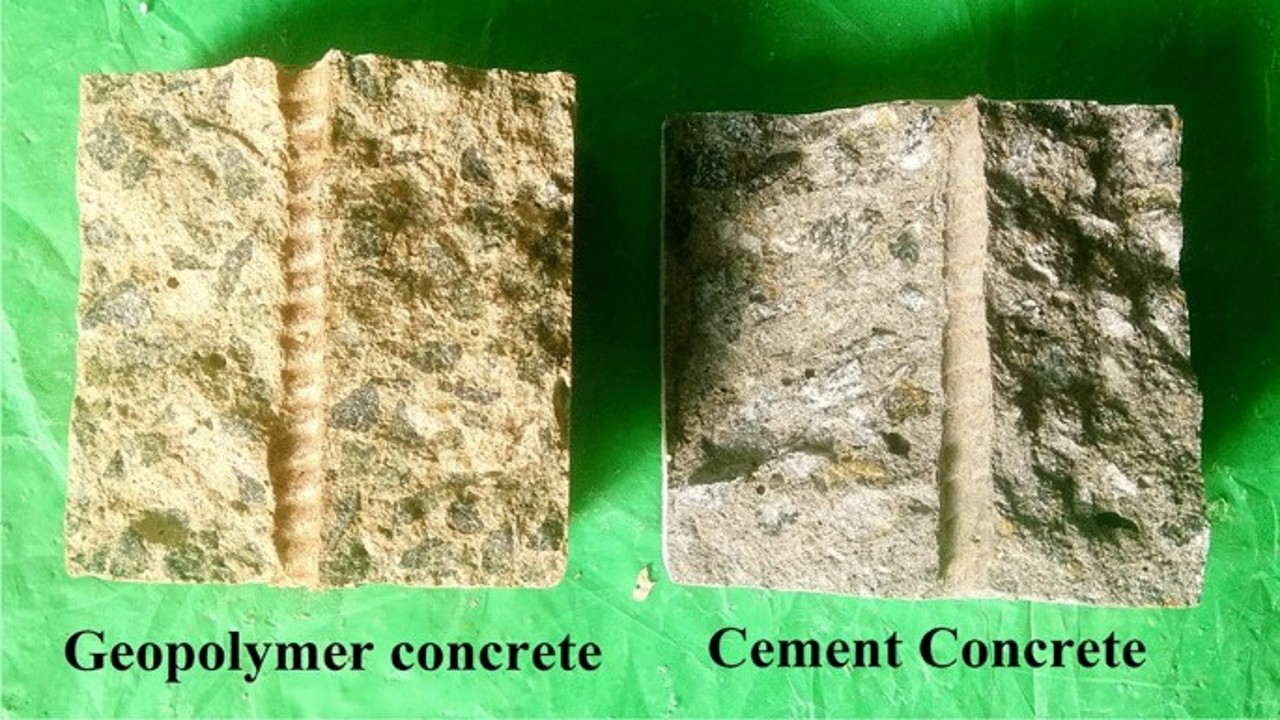
Composition and Constituents of Geopolymer Concrete
The components of geopolymer concrete combine to create a sturdy and long-lasting substance. The following are the main components of geopolymer concrete:
Source Materials: Industrial waste products including fly ash, slag, and other pozzolanic minerals are used as the source materials for geopolymer concrete. The development of geopolymeric linkages depends on the presence of silica and alumina, both of which are abundant in these materials.
Alkaline Activators: The interaction of source materials with alkaline activators starts the geopolymerization process. Alkali metal hydroxides (such as sodium hydroxide or potassium hydroxide) and alkali metal silicates (such as sodium silicate or potassium silicate) are frequently combined to form alkaline activators. The geopolymeric reaction can be sparked by the activators because they offer the required alkaline environment.
Water: To help the source materials dissolve and get activated so that the geopolymer binder can develop, water is added to the mixture. To get the appropriate workability of the concrete, the amount of water utilised should be carefully managed.
Aggregates: Various forms of aggregates, such as crushed stone, gravel, or sand, may be used in geopolymer concrete to add bulk and enhance the material’s mechanical qualities. The employed aggregates must be pure, devoid of impurities, and compatible with the geopolymer binder.
Admixtures: To change certain qualities of the geopolymer concrete, additives can be applied. Superplasticizers to increase workability, accelerators to shorten the setting time, and air-entraining agents to increase freeze-thaw resistance are examples of common admixtures.
Depending on the intended qualities and project needs, the amounts and particular components utilised in geopolymer concrete may change. In order to obtain the requisite strength, workability, and durability qualities, the mix design of geopolymer concrete carefully considers the suitable source materials, activator composition, water-to-binder ratio, and other additives.
It is important to remember that geopolymer concrete technology is still developing, and continual research and development is being done to investigate new materials and perfect the composition for different purposes.
Also Read: Tremix Flooring or VDF: Design, Installation, Benefits, Application, Costing
Early Strength Properties of Geopolymer Concrete
Geopolymer concrete exhibits excellent early strength properties, often comparable or even superior to those of conventional Portland cement-based concrete. The composition of the geopolymer binder, the curing environment, and the presence of additives are only a few of the variables that have an impact on the early strength development of geopolymer concrete.
Early strength of geopolymer concrete is greatly influenced by the geopolymer binder, which is created by the interaction of source materials with alkaline activators. To encourage quick geopolymerization and early strength increase, the type, quantity, and content of the source materials can all be optimised. In general, larger alkaline activator concentrations and a proper alkaline-to-source material ratio can hasten the geopolymerization process, which in turn hastens the development of strength.
The early strength of geopolymer concrete is strongly influenced by curing conditions as well. To guarantee optimal hydration and geopolymerization processes, enough curing is necessary. The normal curing temperature for geopolymer concrete is 60–90°C (140–194°F), which expedites the chemical processes and encourages the development of early strength. The strength of geopolymer concrete at an early age can be greatly increased by this thermal curing procedure known as heat curing.
To further improve early strength qualities, additives can be added to the geopolymer concrete mix, such as accelerators or finely powdered pozzolanic elements. Accelerators are used to hasten the setting and hardening process, which hastens the development of strength. When applied in modest amounts, finely powdered pozzolanic minerals can serve as nucleation sites for the geopolymeric processes, encouraging early-age strength growth.
It’s vital to remember that the mix design, curing circumstances, and testing methods can all affect the unique early strength characteristics of geopolymer concrete. However, geopolymer concrete has shown the ability to acquire strength quickly, frequently reaching a significant level of strength within the first few days of curing. Due to this quality, it is appropriate for situations where early strength is essential, such as fast-track building projects or precast concrete parts.
It is important to note that geopolymer technology continues to be the subject of continuing research and development, with the goal of better understanding and maximising early-age strength attributes. The goal of this study is to improve geopolymer concrete’s functionality and suitability for use in a variety of construction applications.
Also Read: Concrete Pump: Types, Applications, Pros and Cons, Maintenance, and Cost Analysis
Flexural Behavior of Geopolymer Concrete
The capacity of geopolymer concrete to sustain bending forces without breaking or deforming excessively is referred to as its flexural behaviour. Assessing the structural performance and appropriateness of geopolymer concrete in applications like beams, slabs, and other parts susceptible to bending stresses requires a thorough understanding of the flexural behaviour.
In general, geopolymer concrete has favourable flexural behaviour that is on par with or better than that of traditional Portland cement-based concrete. The composition of the geopolymer binder, curing conditions, the characteristics of the aggregate, and the presence of reinforcement are the main variables affecting the flexural behaviour of geopolymer concrete.
The strength and stiffness of geopolymer concrete are mostly due to the geopolymer binder, which is created when alkaline activators are used to react with the source ingredients. Flexural strength and modulus of elasticity can be improved by optimising the binder composition, including the choice and ratio of source materials and activators. Improved flexural characteristics are frequently the consequence of a larger concentration of alkaline activators and an appropriate alkaline-to-source material ratio.
In geopolymer concrete, flexural strength development is significantly influenced by the curing conditions. A dense microstructure is encouraged by proper curing, which includes controlling moisture and temperature, and the link between the geopolymer binder and aggregates is strengthened. It has been demonstrated that geopolymer concrete’s flexural strength may be increased by curing at high temperatures, such as by heat curing.
Geopolymer concrete’s flexural behaviour is also influenced by the characteristics of the particles used in it. The flexural strength and toughness of the concrete can be improved by using well-graded aggregates with an appropriate particle size distribution and strong interlocking properties. Clean, free of impurities, and suitable aggregates with the geopolymer binder aid to guarantee a solid link between the two.
Geopolymer concrete’s flexural behaviour is further improved with reinforcement, such as steel bars or fibres. Reinforcement increases the tensile strength and ductility of the concrete, enabling it to withstand bending forces and prevent unexpected failure. To maximise the flexural performance of geopolymer concrete structures, the type, size, and distribution of reinforcement should be well specified.
Geopolymer concrete can display substantial flexural strength, ductility, and fracture resistance, according to research findings. Because of its strong compressive strength, it frequently performs well in flexural applications. However, while constructing geopolymer concrete parts for flexural applications, it is crucial to take into account variables like strain compatibility, crack management, and long-term durability.
It is important to note that geopolymer technology continues to undergo research and development in order to discover and improve the flexural behaviour of geopolymer concrete. This study seeks to further our understanding of the material’s mechanical characteristics and advance its use in more structural applications.
Performance Assessment of Geopolymer Concrete
Based on a number of variables, including compressive strength, durability, shrinkage, and chemical resistance, geopolymer concrete performance is assessed. The mechanical characteristics and long-term behaviour of geopolymer concrete have been evaluated via extensive testing and research. These experiments have shown encouraging findings, suggesting that geopolymer concrete can match or even surpass the performance standards of conventional concrete.
Advantages of Geopolymer Concrete
Compared to traditional Portland cement concrete, geopolymer concrete has a number of benefits. Among the notable advantages are:
Reduced Carbon Footprint: Utilising industrial byproducts like fly ash, geopolymer concrete lowers the requirement for cement manufacturing. As a result, cement production emits substantially less carbon dioxide, making it a more ecologically friendly choice.
Enhanced Durability: Excellent resistance to chemical assaults, such as sulphate attack and alkali-silica reaction, is displayed by geopolymer concrete. Additionally, it exhibits lesser permeability, which decreases the entry of dangerous elements and improves the robustness of buildings.
Increased Fire Resistance: In comparison to regular concrete, geopolymer concrete is more fire resistant. It is useful for fire-resistant applications because it displays minimal spalling and maintains its structural integrity at high temperatures.
Better Heat Insulation: Due to its lower thermal conductivity than conventional concrete, geopolymer concrete offers better heat insulation. This quality is advantageous for buildings that need to regulate temperature, such as those in hot or cold regions.
Applications of Geopolymer Concrete
In several areas of the building business, geopolymer concrete is used. A few noteworthy uses are:
Infrastructure Development: Construction of bridges, roads, tunnels, and other infrastructure projects that need durability and extended service lives may be completed using geopolymer concrete.
Precast Elements: Due to its early strength development and improved longevity, geopolymer concrete is a good material to use for creating precast parts like beams, columns, and wall panels.
Sustainable Buildings: The use of geopolymer concrete in the construction of sustainable buildings is growing. It has decreased environmental impact and is suitable for usage in walls, floors, and other structural components.
Repair and Rehabilitation: By offering improved durability and resistance to chemical assaults, Geo – Polymer concrete may be used for repair and rehabilitation projects, prolonging the service life of existing structures.
The Future of Geopolymer Concrete
Geopolymer concrete has a bright future since it offers a sustainable and cutting-edge substitute for conventional Portland cement-based concrete. Numerous factors are influencing the development of G – Polymer concrete as research and development in the industry continue to advance:
Increased Awareness and Adoption: Cement production’s carbon footprint is becoming more well known as sustainability and environmental issues take centre stage in the building sector. By using industrial byproducts and lowering CO2 emissions, Geo – Polymer concrete provides a solution. The use of G – Polymer concrete in diverse building projects is expected to be influenced by greater knowledge of and appreciation for its advantages.
Technological Advancements: The performance and characteristics of Geo – Polymer concrete are the subject of ongoing research and development. This entails improving mix designs, looking into fresh sources of material, improving curing procedures, and looking into the usage of reinforcements and additives. Technological developments will help Geo – Polymer concrete’s strength, durability, usability, and other desirable attributes to continue to improve.
Standardization and Codes: There is a need for standardised testing procedures, design standards, and building rules that are particular to Geo – Polymer concrete as it becomes more widely accepted and used. To guarantee uniform quality, dependable performance, and broad use of Geo – Polymer concrete in building projects, efforts are being undertaken to create these standards.
Expanded Applications: Current uses for Geo – Polymer concrete include structural components, pavements, and precast components. Its potential application space is anticipated to grow more in the future. Its applicability for specialised uses such offshore constructions, nuclear waste encapsulation, and 3D printing is now the subject of research. Due to its special characteristics, Geo – Polymer concrete is a flexible material with a wide range of possible applications.
Collaboration and Knowledge Sharing: The development and widespread use of Geo – Polymer concrete depend on cooperation between researchers, business experts, and legislators. The exchange of ideas, experiences, and best practises is facilitated via knowledge sharing platforms, conferences, and collaborative initiatives. This partnership will help to speed innovation and expand the use of Geo – Polymer concrete in building techniques.
Economic Viability: The economic feasibility of Geo – Polymer concrete is anticipated to increase as technology develops and demand for environmentally friendly building materials rises. Industrial byproducts can be used as source materials, which can increase their economic worth and lower waste disposal costs. Over the course of a structure’s life, Geo – Polymer concrete can save money because to its long-term durability and minimal maintenance needs.
Overall, Geo – Polymer concrete’s future is bright. Geo – Polymer concrete has the potential to revolutionise the construction industry by providing a sustainable and high-performance alternative to traditional concrete. This is possible with continued research, technical breakthroughs, improved awareness, and collaboration.
Costing of Geopolymer Concrete
The price of geopolymer concrete might change based on a number of variables, including the location, raw material availability, project size, and particular specifications. But I can give you a broad overview of the elements that go into the price of geopolymer concrete.
Raw Materials: Industrial by-products like fly ash or slag, which are frequently more affordable than Portland cement, are frequently used to make Geo – Polymer concrete. Depending on their accessibility and closeness to the building site, the price of various raw materials might change.
Production Process: A specialised manufacturing procedure, including the activation of the Geo – Polymer binder and appropriate curing methods, are needed to produce geopolymer concrete. The cost of manufacturing as a whole might vary depending on the machinery, energy use, and labour.
Project Size and Volume: The cost of a project is directly impacted by the amount of geopolymer concrete used. Larger projects frequently benefit from economies of scale because efficient manufacturing and bulk orders of raw materials can reduce the cost per unit.
Additives and Reinforcements: It can be necessary to add more chemicals, such superplasticizers or accelerators, to improve the characteristics of geopolymer concrete. The price of these additions may go towards the overall price. Additionally, the price will rise if steel bars or fibres are needed to strengthen the geopolymer concrete.
Transportation and Logistics: The cost of transportation is influenced by the distance between the production plant and the building site. Long-distance transportation of the finished Geo – Polymer concrete or the raw components may increase the overall cost.
Testing and Quality Control: To guarantee adherence to pertinent requirements, geopolymer concrete may need specialised testing and quality control techniques. You should think about how much these tests and inspections will cost.
Market Conditions: The market’s total supply and demand for Geo – Polymer concrete might affect its price. Due to a lack of supply or specialised knowledge, prices may be higher in a niche or developing sector.
It’s crucial to remember that Geo – Polymer concrete, as opposed to conventional concrete, has a lower environmental effect and the potential for long-term economic savings. Geo – Polymer concrete cost estimates, however, would need to be based on a thorough evaluation of the project’s specifications and the surrounding market environment. Pricing information for your individual project would be more accurate if you spoke with local suppliers and contractors.
Conclusion
With several advantages over conventional Portland cement concrete, including a smaller carbon footprint, increased durability, and higher fire resistance, geopolymer concrete offers a practical substitute. It is excellent for a variety of applications due to its flexural behaviour and early strength characteristics. Geopolymer concrete has the potential to transform the building sector and help create a more sustainable future with continued research and development.
Frequently Asked Questions – FAQs
Is Geo – Polymer concrete more expensive than traditional concrete?
Depending on local conditions and the availability of raw materials, Geo – Polymer concrete prices may change. Due to the use of industrial by-products, geopolymer concrete’s cost can occasionally be on par with or even cheaper than that of conventional concrete.
Can Geo – Polymer concrete be used in marine environments?
Yes, Geo – Polymer concrete may be utilised in maritime conditions and has proven to have good resistance to chloride penetration. Compared to traditional concrete, it provides improved durability and corrosion prevention.
Does Geo – Polymer concrete require special curing conditions?
Elevated curing temperatures are often necessary for successful geopolymerization of Geo – Polymer concrete. The essential conditions may now be achieved because to improvements in curing methods including steam curing and heat blankets.
Can Geo – Polymer concrete be colored or textured?
Yes, Geo – Polymer concrete can be colored and textured to achieve a desired aesthetic appearance. Various additives and pigments can be incorporated into the mix to achieve the desired visual effect.
Is Geo – Polymer concrete suitable for high-rise construction?
The construction of high-rise buildings may benefit from the usage of Geo – Polymer concrete. It is a feasible solution for tall constructions where safety and longevity are key because to its early strength development and high fire resistance.

